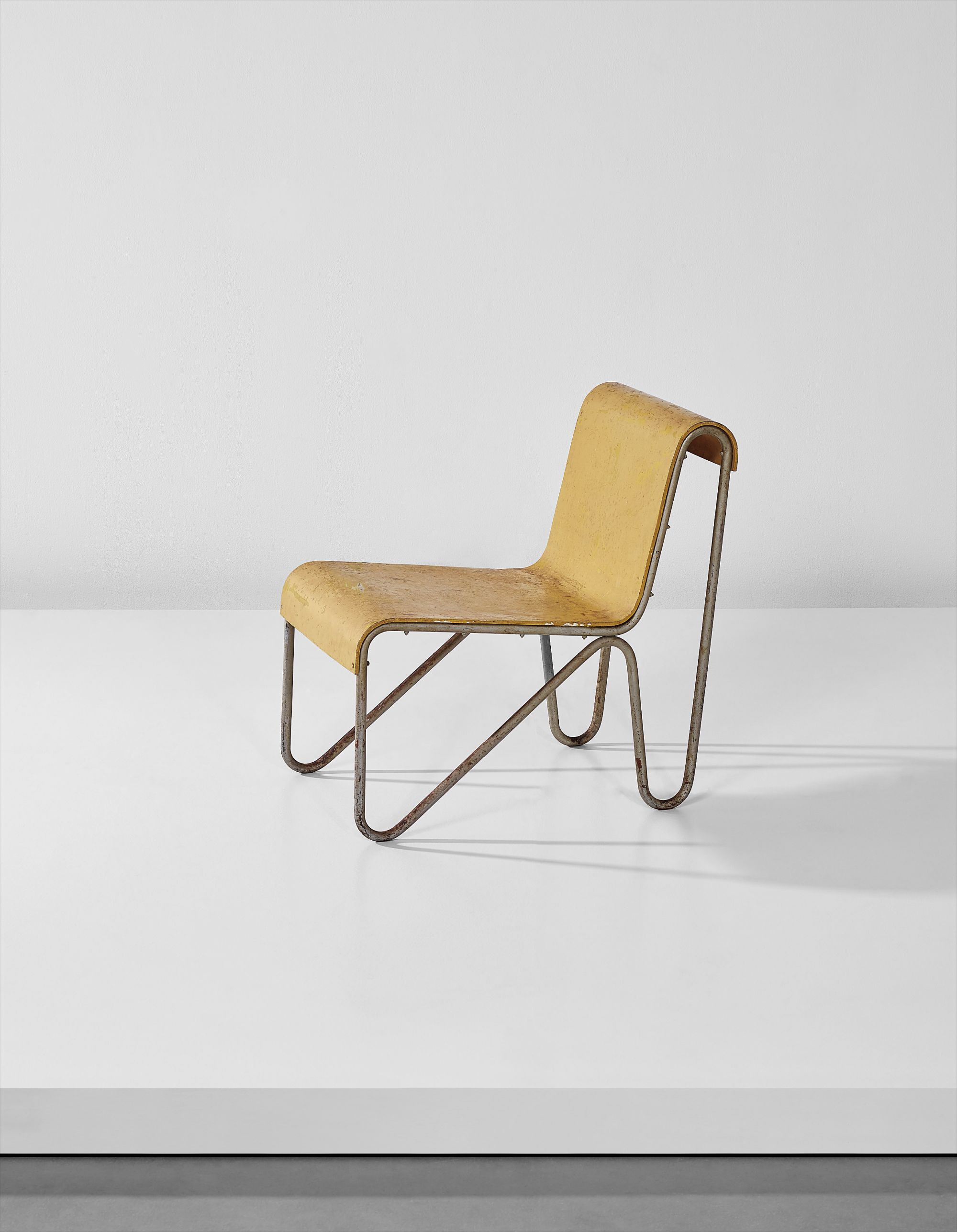

49
Gerrit Thomas Rietveld
Beugelstoel
Full-Cataloguing
The real innovation in Rietveld’s Beugel chair however was not found in the frame but in the undulating seat and backrest. Arguably, Rietveld was the first modern designer to develop a one-piece seating shell, predating Alvar Aalto’s experiments. For the initial prototypes of the Beugel chair, Rietveld used solid steel rod for the frame and seat sections out of Vulkanfber: an industrial fibreboard that could be shaped after being soaked in water and (more or less) kept its form when dried. Given his interest for unconventional materials in cabinet making, Rietveld immediately saw the potential of this fibre composite that was mainly used for the production of cheap imitation-leather suitcases. In 1928, the Beugel chair made its international debut in Stuttgart at the ‘Der Stuhl’ exhibition where it was picked up quickly by the international press, which commented on the groundbreaking seating shells. But it was not until 1930-1931 that the Beugel chair was taken into production by the avant-garde department store Metz & Co, in a version with tubular steel frames and plywood seat sections such as the present lot.
Rob Driessen
March 2017
Gerrit Thomas Rietveld
Dutch | B. 1888 D. 1964Gerrit Thomas Rietveld began as an apprentice in his father's cabinetmaking workshop, going on to train and work as a draftsman. In 1917 he started his own furniture-making workshop in Utrecht. Positive critical review by Theo van Doesburg in his journal De Stijl resulted in near-instantaneous influence on broader developments in European modernism. This connection to the De Stijl movement also inspired him to introduce color to the posts, rails and terminals of his furniture. His resulting "Red-blue" armchair is among the most iconic chair designs of the twentieth century.
From the beginning, Rietveld embraced modernist principles of functionalism, simplicity of form and mass-production, and eventually moved away from De Stijl to become a member of the Congrès Internationaux d'Architecture Moderne (CIAM). Rietveld worked through the post-war years, completing a number of private residences, housing developments and institutions. He continued to design furniture for these commissions as well as for retailers like Metz & Co.